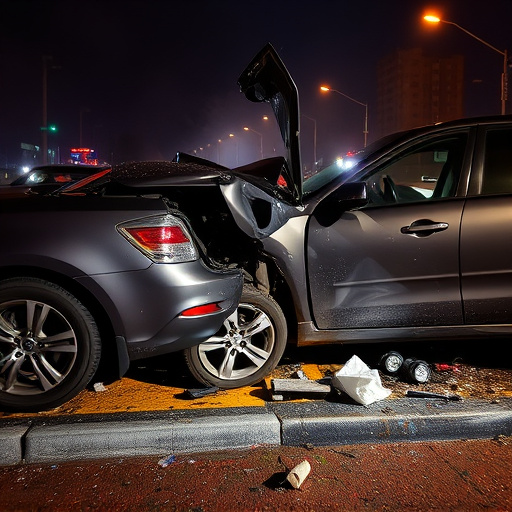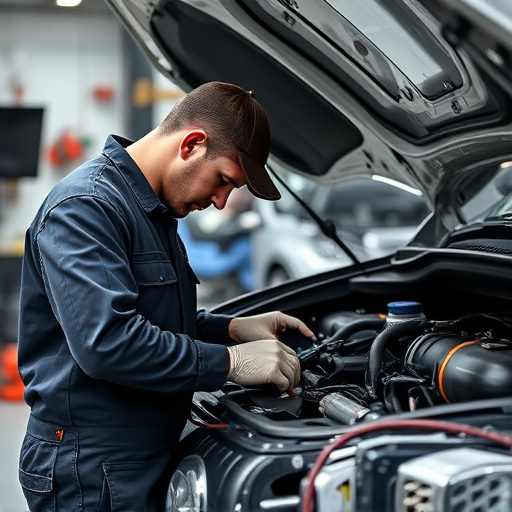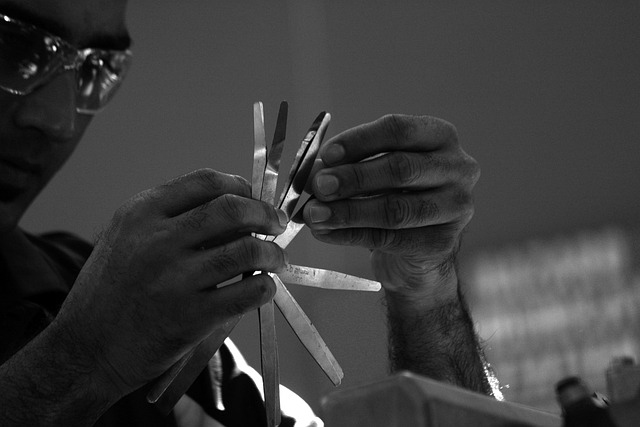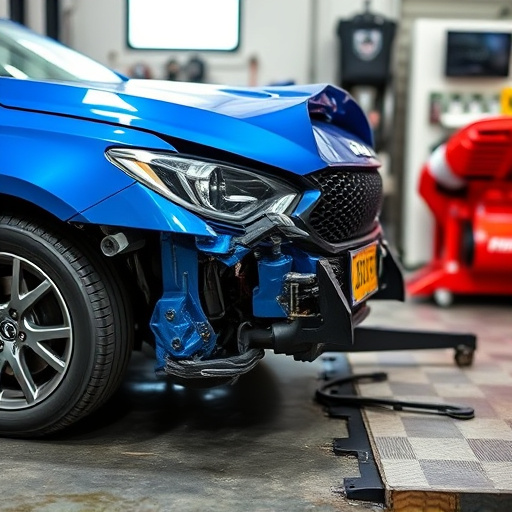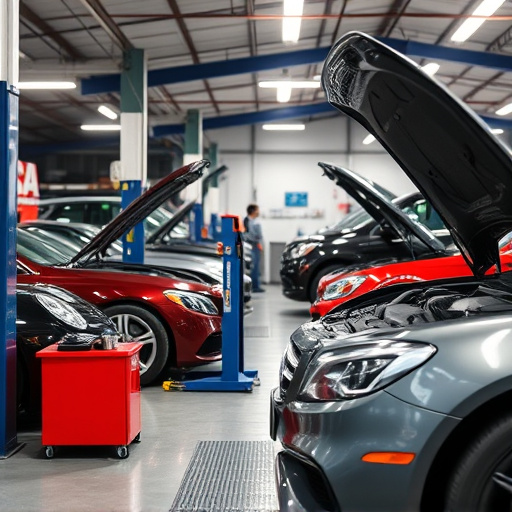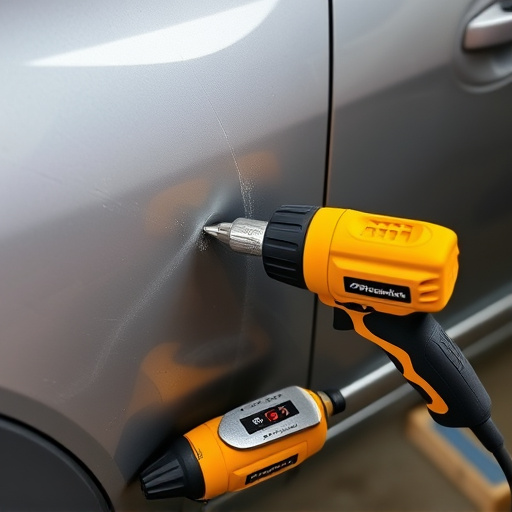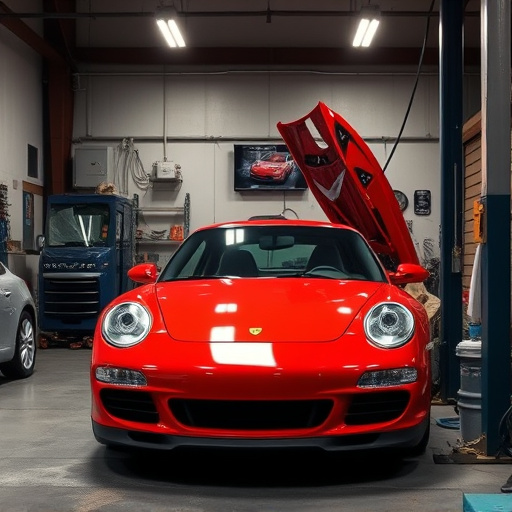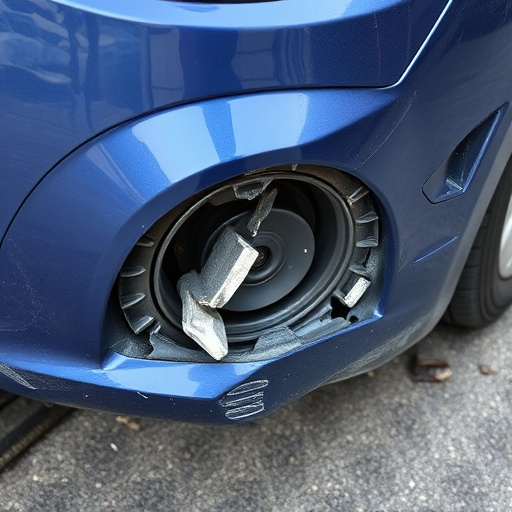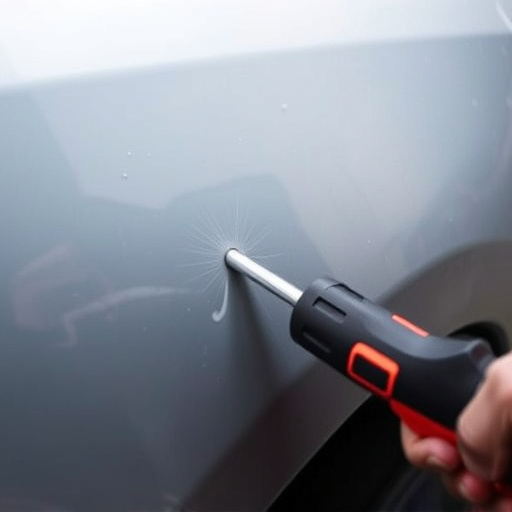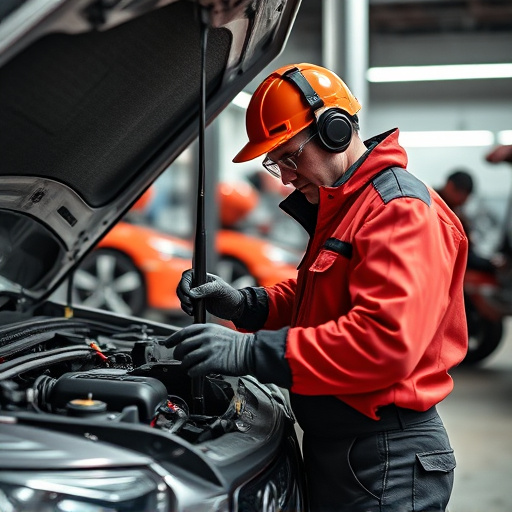Achieving precise original paint matching in automotive repairs requires understanding color theory (hue, saturation, value) and using specialized tools like spectrophotometers to accurately measure and mix colors. This meticulous process, crucial for collision repair services, involves preparing surfaces, fine-grit sandpaper, wet sanding, and gradual layer building to create seamless, indelible results.
Learn the art of achieving flawless repairs with original paint matching. This comprehensive guide unveils the secrets to restoring your vehicle’s aesthetic, ensuring a seamless blend with its existing finish. From understanding color theory for precise matching to gathering and analyzing paint samples, we cover it all. Discover proven techniques for applying and blending new paint, allowing you to master the intricate process of original paint matching like a professional.
- Understanding Color Theory for Accurate Matching
- Gathering and Analyzing Original Paint Samples
- Techniques for Applying and Blending New Paint
Understanding Color Theory for Accurate Matching
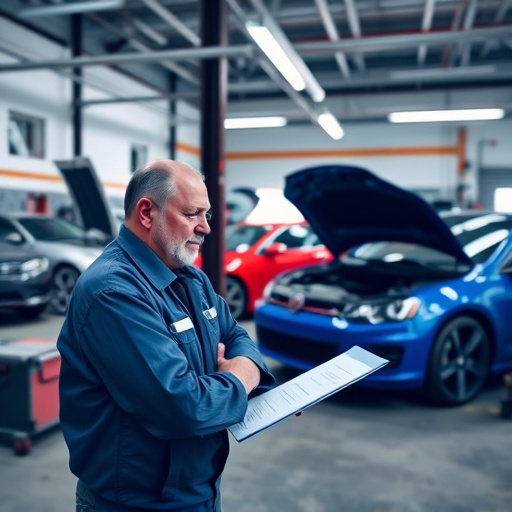
Understanding color theory is fundamental when aiming for accurate original paint matching during repairs, be it for a vehicle restoration or automotive bodywork. Color is composed of three main components: hue, saturation, and value (HSV). Hue refers to the type of color, like red or blue. Saturation determines how vibrant or muted the color is, while value represents its lightness or darkness.
To match existing paint perfectly, you must consider these factors. For instance, in vehicle restoration, dent removal techniques might affect the paint’s appearance. Professional automotive repair services utilize specialized tools to measure and mix colors precisely, ensuring the restored area blends seamlessly with the surrounding original paintwork. This attention to detail is what creates a flawless finish.
Gathering and Analyzing Original Paint Samples
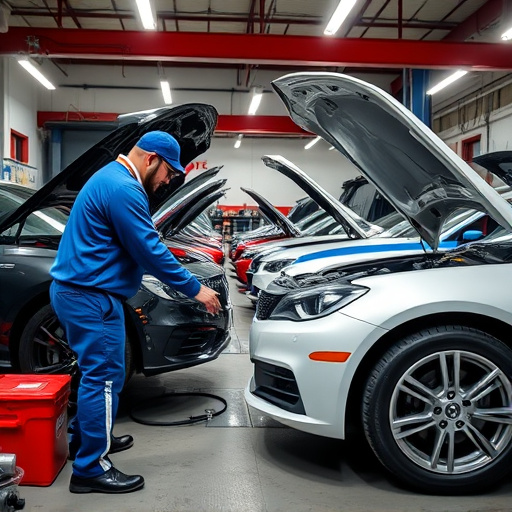
When aiming for precise original paint matching during repairs, gathering and analyzing accurate samples is paramount. Start by collecting paint swabs or scrapings from the existing vehicle surfaces, ensuring they represent the exact color and finish you’re trying to match. These samples should include any unique variations in hue, tone, or texture found in hard-to-reach areas or subtle differences across different parts of the vehicle body.
Next, utilize advanced tools like spectrophotometers for detailed analysis. These devices measure light reflectance across a spectrum of wavelengths, providing precise data on color values. This information allows for exact replication by comparing it to available paint options, be it from manufacturers or specialized retailers. By combining physical samples with technological analysis, you can achieve remarkable accuracy in matching the original paint during auto glass repair, auto collision center restoration projects, or vehicle restoration endeavors.
Techniques for Applying and Blending New Paint
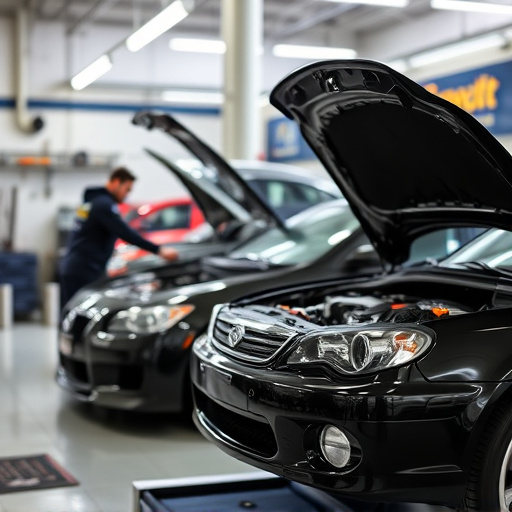
When applying original paint matching during repairs, especially in meticulous processes like Mercedes Benz repair or dent repair, the art of blending new paint is paramount. Start by ensuring a clean and prepared surface, free from any debris or existing paint imperfections. Utilise fine-grit sandpaper to gently smoothen the area, creating a seamless transition for the new paint.
Employ techniques such as wet sanding, where you blend the new coat with a dampened paper, to achieve a softer, more natural blend. This process is crucial in collision repair services, requiring precision and patience to match not just the colour but also the texture of the surrounding paintwork. Gradually build up layers of paint, allowing each to dry thoroughly before applying the next, for optimal results that mimic the original paint matching perfectly.
Applying original paint matching in repairs requires a blend of color theory knowledge, careful sample analysis, and precise application techniques. By understanding these steps and utilizing the right tools, you can achieve seamless integration between old and new paint, ensuring your repair work is virtually indistinguishable from the original. Incorporate these practices into your restoration process for optimal results when aiming for that perfect match.
